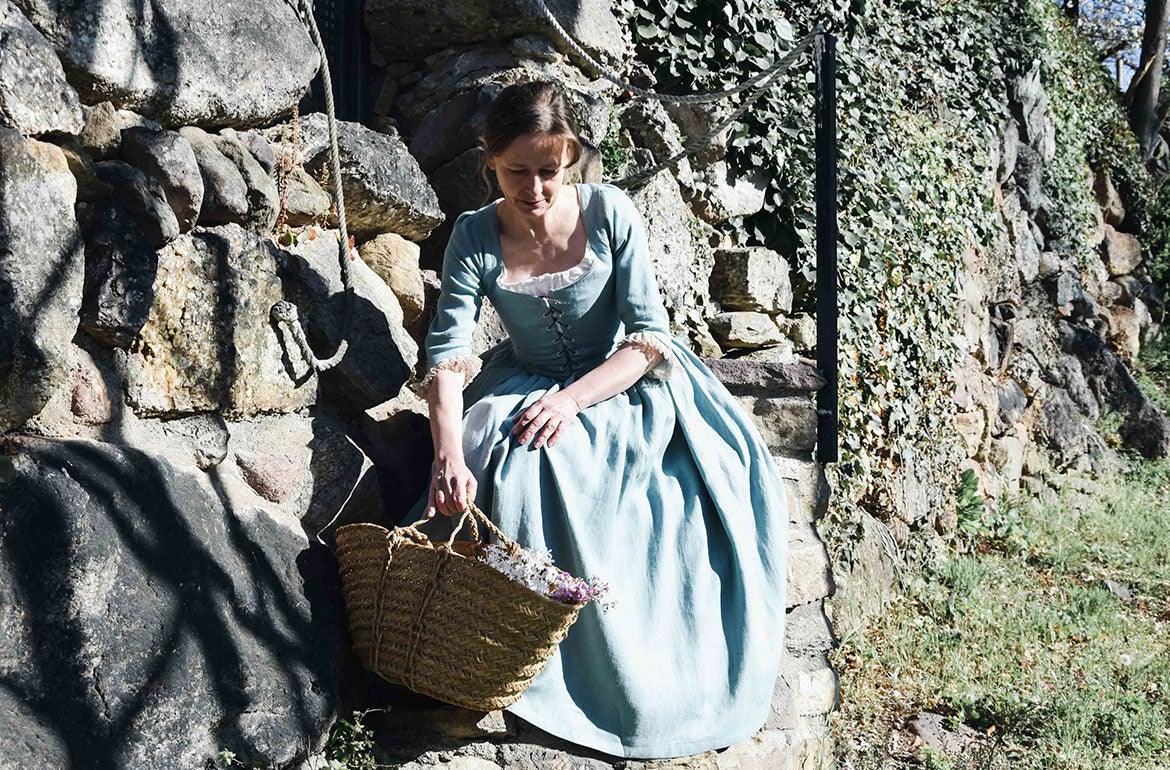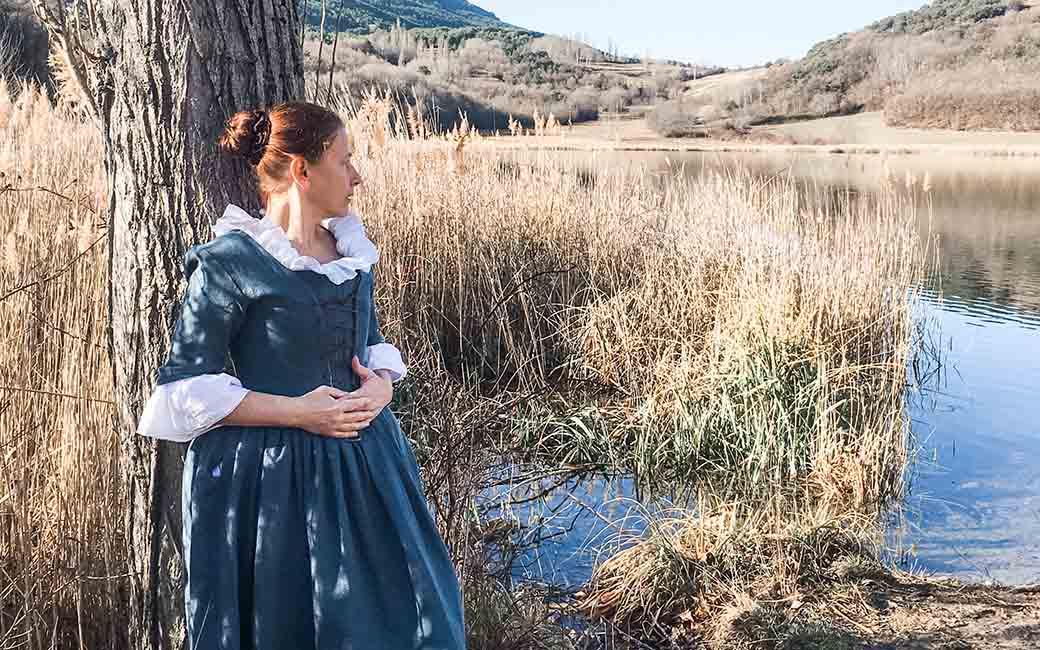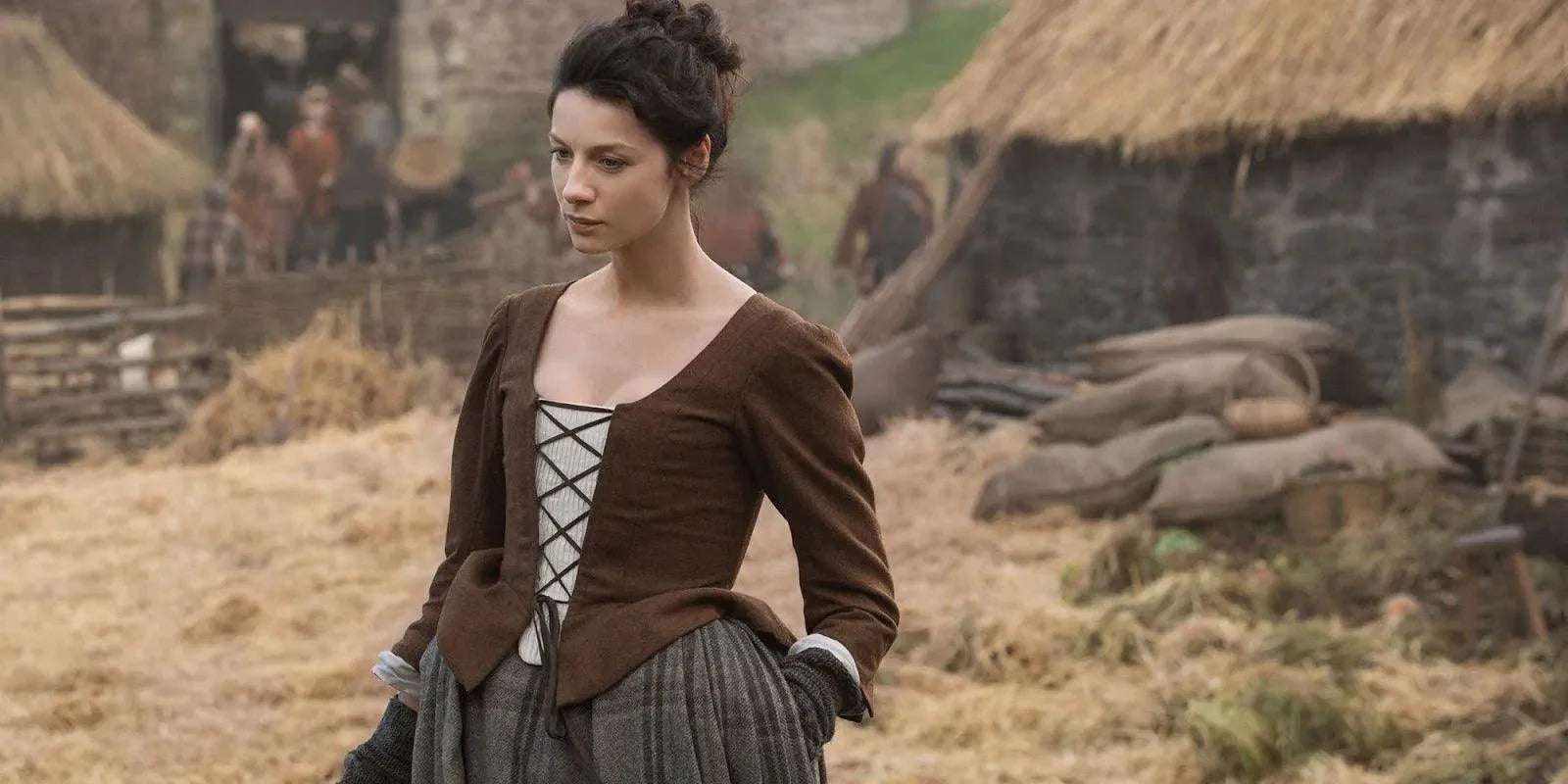During the 18th century, women's fashion in Europe underwent several major changes. The early part of the century was dominated by the ornate and over-the-top styles of the Baroque and Rococo periods. These dresses featured heavy fabrics, corsets, panniers, and lavish embellishments like ruffles, bows, and florals. While these dresses projected status and wealth, they restricted women's movements due to their weight and rigid structure.
By the mid-18th century, a new style emerged in England and France that came to be known as the robe à l'anglaise or "English gown." This new style was characterized by simpler and lighter fabrics, looser fits, and fewer embellishments. The English gown provided greater comfort and mobility for active women who participated in social events and leisure activities. At the same time, the style retained some elements of traditional 18th century fashion through details like a fitted bodice and full skirt. The English gown signified a shift towards practicality and versatility in women's fashion.

Louise Dress Details
The Louise dress from Atelier Serraspina is an elegant yet practical 18th-century style gown. Unlike the voluminous Robe à la Française, the Louise features a more streamlined silhouette with a fitted bodice and flowing skirt.
The dress is designed in one piece, with the front and back panels sewn to the sides of the skirt. This allows for a close fit through the bodice and a smooth transition into the full skirt.
The fitted bodice has seaming to emphasize the waist and a square neckline. The square neckline provides a delicate femininity and contrast to the fitted bodice. Overall, the Louise dress combines 18th-century inspired style with a practical design perfect for an active woman.
Comparison to Robe à la Française
Unlike the cumbersome Robe à la Française, the English gown offered women much more flexibility and ease of movement. The Louise dress has a noticeably less voluminous silhouette, achieved through a slimmer skirt and closer fit to the body. This allowed women to be active and participate in social activities without the restrictive bulk of a wide hoop skirt.
The English gown's shorter hemline ending around the ankle provided significantly more mobility for walking and recreational pastimes. Women were no longer limited by heavy floor-length skirts that impeded motion. The practicality and versatility of the Louise dress enabled women to enjoy a range of daily activities with greater comfort and agility. Though still retaining an elegant 18th century style, the looser, abbreviated design permitted substantially more freedom and function.

SHOP THE LOUISE IN ALMOND GREEN LINEN
Intended Purpose
Unlike the elaborate Robe à la Française, the Louise dress is designed for the active 18th-century woman. While not entirely devoid of coquetry, the Louise has a practical style that allows women to move through their daily lives with ease and comfort.
The fitted bodice flatters the figure while still permitting a full range of motion, and the full skirt retains some 18th-century volume while being streamlined for mobility. Louise is stylish yet functional - the perfect dress for an 18th-century lady pursuing her busy social and domestic activities. She can receive guests, care for children, or enjoy leisurely pastimes without sacrificing fashion or comfort.
The Louise's graceful neckline and close waist convey delicate femininity and flattery while the looser fit gives women the freedom to accomplish tasks with agility. This clever combination allows the wearer to look every bit the fashionable gentlewoman while not hampering her active lifestyle. For the 18th-century woman desiring practicality and poise, the Louise is the ideal dress.
Skirt Design
The generous volume of the skirt remains a typical attribute of 18th-century dresses, meant to show status and wealth through the use of voluminous fabrics. But the English Gown adds an innovative design - the skirt comes in one single piece! Both sides are sewn to the front and back panels of the dress, creating a seamless flow while still retaining the fashionable full shape.
This clever construction allows even more ease of movement, as there are no seams around the hips or sides to inhibit bending or twisting. The skirt hangs gracefully from the fitted bodice in soft, billowing folds. The clean lines add to the simplified elegance of the overall silhouette.
Yet the textured linen retains just enough structure to avoid appearing totally shapeless. The Louise skirt design truly achieves the best of both worlds - amplifying mobility while maximizing visual impact! This revolutionary style paved the way for more active lifestyles while upholding the fashionable voluminous shapes of the time period.
In Almond Green Linen
For this photoshoot, done in the spring of 2021 in my village of La Pobleta de Bellvehí, in the Catalan Pyrenees, I am wearing Louise's version in almond green linen. The linen fabric is a medium weight at 205 grams per square meter, providing both comfort and structure. The almond green color is a lovely natural tone that pairs nicely with the spring backdrop. It's the first green color offered for the Louise dress, adding some new variety to the shop's catalog.
The linen breathes well, making it ideal for warmer weather while still maintaining its shape. Unlike silk, linen holds up well to repeated wearings without losing its beauty. And the almond green offers a soft, versatile color that can be dressed up or down. It's easy to see why I fell in love with this fabric as soon as I laid eyes on it. Both the weight and hue make it perfect for bringing 18th century style into a 21st century life.
Photoshoot Details
The photoshoot for this dress took place in the spring of 2021 in the Catalan Pyrenees in my village of La Pobleta de Bellvehí. Capturing the Louise dress during the spring in the lush green mountainsides of the Pyrenees was the perfect way to showcase this beautiful almond green linen fabric. The spring blooms and greenery complemented the color and drape of the linen skirt, while the mountainscapes provided a rich backdrop befitting 18th century fashion. Wandering the trails and meadows of the Pyrenees in this gown transported me back to the late 1700s, when women of leisure would promenade in flowing dresses that allowed movement and freedom. While posing for photos along stone walls and under blossoming trees, I felt the spirit of 18th-century ladies who embraced both style and adventure. Photographing the Louise dress in the Catalan Pyrenees connected this timeless design to the beauty of its natural surroundings.
Historical Significance
The English Gown represented a shift in women's fashion towards less restrictive styles in the late 18th century. As European societies embraced Enlightenment values emphasizing reason, knowledge, and progress, women's roles began to evolve as well.
The extravagant, heavy Robe à la Française with its excessive frills and corseted waist symbolized the female ideal as a decorative object of beauty. Women wearing these ornate gowns were expected to gracefully adorn the home and salons. Physical movement and activity were quite limited.
In contrast, the simpler English or round gown allowed upper-class women more freedom. While still elegant, the looser bodice and lighter materials permitted a wider range of motion. As women participated more in social engagements like balls and Hunts, practicality and comfort became priorities.
The Louise dress heralded this transition towards active lifestyles for European women. Its embodiment of the free-flowing neoclassical aesthetic also aligned with Enlightenment principles. Still refined and feminine, the English gown facilitated women's emerging roles as social catalysts and intellectual figures in the new era.
Conclusion
The Louise dress style represented a shift in 18th century women's fashion towards more practical and comfortable clothing that allowed for greater mobility and activity. While still retaining some stylistic touches like a fitted bodice and full skirt, the Louise eliminated excessive volume and restriction. This enabled women to participate more actively in daily life and society.
The one-piece skirt attached at the front and back was a key innovation, doing away with heavy underskirts and simplifying construction. Linen fabric provided durability and breathability for women's active lifestyles. As exemplified by the almond green linen Louise dress, this style allowed feminine beauty to shine while permitting freedom of movement.
Though less lavish than earlier 18th century gowns, the Louise still maintained touches of luxury and aesthetic appeal. Its legacy lives on in the empire waist dresses and simple daywear of subsequent eras. By pioneering comfortable yet stylish clothing, the English Gown dress helped pave the way for women to more fully engage with the world around them. Its practical and progressive design ethos helped evolve fashion into a tool of female empowerment.






